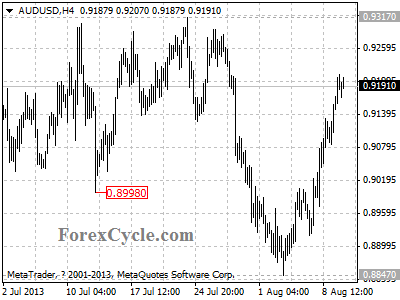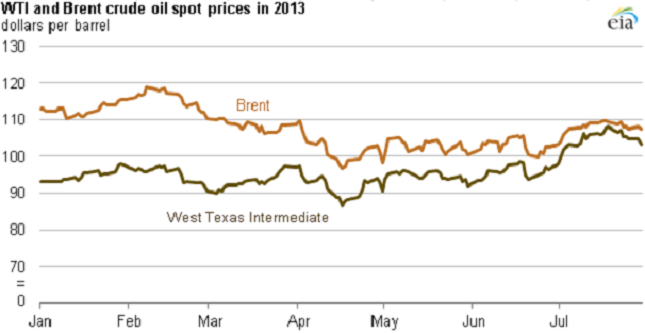By MoneyMorning.com.au
‘The shares of the big banks are on a grossed-up yield of between 7 and 9 per cent…
‘A lot of money is in term deposits and more of that is likely to be rotated from these when the deposits mature into the higher-yielding shares.‘ – The Age
We’ve said for some time that the yield rally isn’t over.
These numbers prove our point. Thanks to the tax benefits from franking credits (see Vern Gowdie’s article here explaining franked dividends) shares can give you more than twice the return of term deposits – which will pay you 4% if you’re lucky.
It’s not surprising investors are dumping term deposits left, right and centre to buy dividend stocks. And as someone who’s so ardently bullish about the stock market, you may think we back that view.
If that’s what you think, you couldn’t be more wrong. Here’s why…
We love the stock market.
It’s the single best, biggest, most affordable and easiest way for ordinary investors to build wealth.
But it can be incredibly risky too if you don’t understand how markets work and why share prices move.
That’s why you should ignore anyone who says you should take all your money from term deposits and stick it in the stock market. Term deposits and the stock market are like chalk and cheese in terms of investing.
One is about as safe as it gets (cash term deposits) and the other is about as risky as it gets (shares).
Cash and Stocks Aren’t the Same
In a normal market we don’t like heavily diversified portfolios – it’s a cop out. We say that investors should take a clear view on the market’s direction and then back that view.
The trouble is this isn’t a ‘normal’ market. There is so much manipulation propping up the market with low interest rates and money printing, it’s too risky to bet everything you’ve got on stocks.
That’s why, even though interest rates are low and heading lower, it’s absolutely vital you don’t lose your head and put all your money in the stock market. As frustrating as it may be to see the earned interest from your term deposit or savings account fall, it’s important you keep part of your wealth in cash.
We know that from personal experience. A letter arrived in the post last week informing us that a six-month term deposit is due to mature in mid-August. We’re 99% certain the interest rate to renew for another six months will be lower than last time.
We’ll grumble about it. But we’ll live with it. It’s part of our permanent cash portfolio. We know we could get a better return if we put the money in stocks. But that part of our portfolio isn’t about making big returns. It’s about having a secure base.
Our cash portfolio is like our gold portfolio. We’ll never reduce it below a set minimum. In fact, from time to time we’ll add to it if we don’t see good value in other investments.
When it comes to adding to our share portfolio, our preference is to use new cash flow rather than taking from our core cash savings.
Of course, if you’re rebalancing your whole portfolio, it’s fine to cut your cash exposure in order to buy stocks. But be sensible about it. Don’t do it for the wrong reasons: e.g. because you’re afraid of missing out.
So, if you’re worried about falling interest rates and the impact it will have on your income, you should look to get the best bang for your buck from your stock investments…
The Future of Aussie Share Dividends?
How low will the Reserve Bank of Australia (RBA) cut interest rates? It’s hard to say. We’re not convinced they’ll fall to the levels seen in the US, Europe and Japan. But you shouldn’t rule it out.
If that happens, term deposit interest rates of 4% will be history. You’ll be lucky to find anything above 2%. And blue-chip stocks paying a grossed up dividend above 4% will be few and far between too.
You only have to look at a few examples from overseas to see the impact of low interest rates on dividend yields:
- BT Group plc [LON: BT.A], telecommunications 2.87% yield
- Verizon Communications [NYSE: VZ], telecommunications 4.18%
- Wells Fargo & Co [NYSE: WFC], bank 2.78%
- Barclays plc [LON: BARC], bank 2.26%
- JP Morgan Chase & Co [NYSE: JPM], bank 2.79%
- Toyota Motor Corp [TYO: 7203], auto 1.46%
These are gross yields.
Remember, Australian banks and telco companies have grossed up yields between 7% and 9%. Can you really expect those yields to last as the RBA keeps cutting rates?
We don’t think so. If we’re right it means investors will need to start revaluing stocks to take into account lower yields. Assuming profits and dividends don’t change, all else being equal that should mean higher share prices.
That could be a problem for the big banks. They’re already trading at a higher earnings multiple compared to their UK and US counterparts.
In short, this is why even though we believe you should invest in stocks to get higher yields, you shouldn’t think that stocks are a comparable risk to a cash investment.
If Aussie blue-chip income stocks can keep growing profits and maintain their dividends, that should be enough to keep attracting dividend-hungry investors.
It’s still a great time to buy stocks, but to use an old cliché, make sure you do it with your eyes wide open.
Cheers,
Kris+
Join Money Morning on Google+
From the Port Phillip Publishing Library
Special Report: The Sixth Revolution
Daily Reckoning: The Global Trend Towards Wealth Protection
Money Morning: Two Approaches to Investing…
Pursuit of Happiness: Learning to Avoid the Governments ‘Noble Wealth Trap’
Australian Small-Cap Investigator:
How to Make Big Money from Small-Cap Stocks



